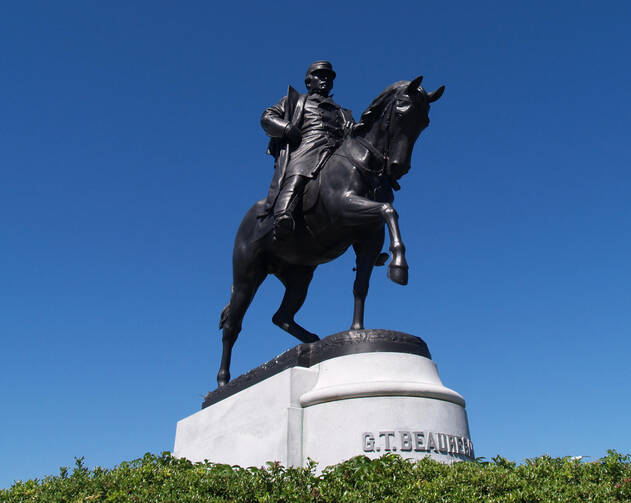It’s a tough time to be a statue. Or to have a building with your name on it. Or even a plaque.
Cecil Rhodes, the 19th-century British entrepreneur, colonialist and, according to some, “an architect of apartheid,” is also considered an educational benefactor because of the famous Rhodes scholarships for international graduate students. But his Cape Town University statue was violated and removed. Tony Abbott, former Australian prime minister, called the proposed destruction of Oxford’s own statue an act of “moral vanity” substituting for “fair-minded enquiry.”
In New Orleans the city council’s proposed plan to eliminate four local statues including Robert E. Lee, P. G. T. Beauregard, Jefferson Davis and a group of white supremacists has been formally approved, though their final fate is unclear. Some statues might just be moved. Writer Walter Isaacson suggests carefully considering each case: why each monument? Andrew Jackson owned slaves and slaughtered a lot of Indians; he also beat the British at the Battle of New Orleans in 1815, with an army that included slaves, freemen of color, Indians and pirates.
The logic of these destructions implies there is no room for memorials to men who were slave owners or fought on the wrong side of the Civil War.
I lived in New Orleans for 10 years, conscious of its history, teaching at Loyola University. That the magnificent equestrian statue of Beauregard should be lost is a loss to both art and justice. After the war Beauregard was active in the Reform Party, which spoke in favor of civil rights and voting rights for recently freed slaves. Jefferson Davis had a beautiful home in the heart of the Garden District. Shall we tear it down? George Washington and Thomas Jefferson owned slaves. Should we still preserve their homes at Monticello and Mount Vernon? Visit Arlington Cemetery in Washington, D.C. Look up and there is Robert E. Lee’s mansion looking down. Would a visitor ask, “What’s he doing in our graveyard?”
Meanwhile Georgetown is changing the name of Mulledy Hall, named for the Jesuit provincial who sold 272 of the Jesuit-owned slaves, disregarding the Jesuit general’s command that families not be split and the profit not be used for province works. And Princeton is considering removing the name of former university president Woodrow Wilson because of Wilson’s support of segregation in government employment.
In these and several similar cases, what is gained by removing the names? What about instead using the names for history lessons? Set up a big plaque or a mini-museum on site and explain why each person’s name was employed in the first place and list his faults as well. At Princeton, every student should read A. Scott Berg’s biography Wilson and then ask if he deserves a building. Father Mulledy was not a “great man,” but why did the Jesuit builders of both Georgetown and Holy Cross name resident halls for him? The discussion prompted a thought-provoking article by Matthew Wuallen in The Hoya, comparing the Mulledy issue to the ambiguity of the great Georgetown Jesuit president Patrick Healy (1875), born into a slave-holding family to a bi-racial former slave mother. Father Healy publicly considered himself white, though he was legally black.
At Georgetown, if they rename the building, I would nominate Congressman Robert Drinan, S.J., the first Catholic priest to serve in Congress, who supported racial integration and opposed the Vietnam War. He lived in that building while in Congress. At Holy Cross I hope they leave the Mulledy Hall alone; I lived there once as dean, and my students and I remember it well.
The teacher in me recommends Ernest B. Ferguson’s “The End of History” (American Scholar, Autumn 2015) and David Cole’s “The Trouble at Yale” (New York Review of Books, Jan. 14 and Feb. 11) where Georgetown law professor Cole, answering a letter to the longer article, concluded: “As I see it, the focus on renaming is a sideshow, and distracts from more central and challenging issues of racial equality and inclusion.” Better to hire and attract more faculty and students of color. “To make it succeed at the nation’s best universities takes a real commitment of resources.”








